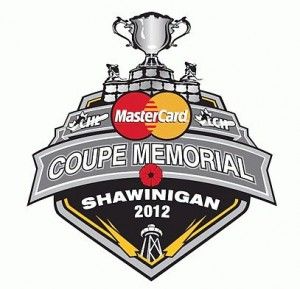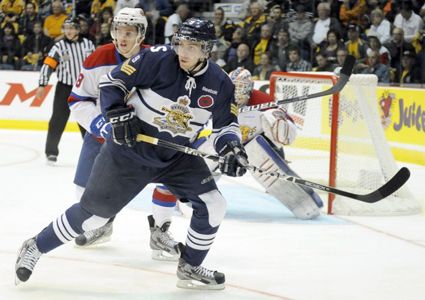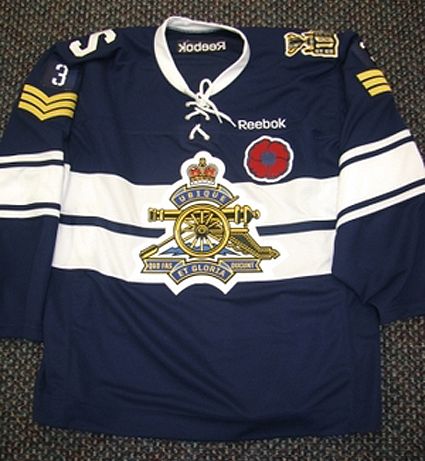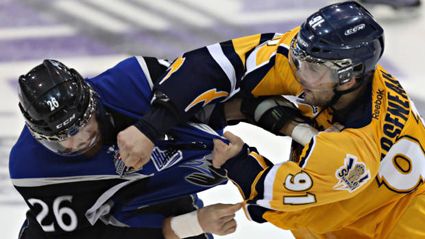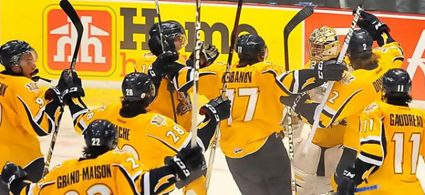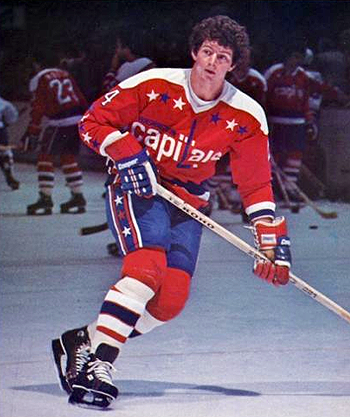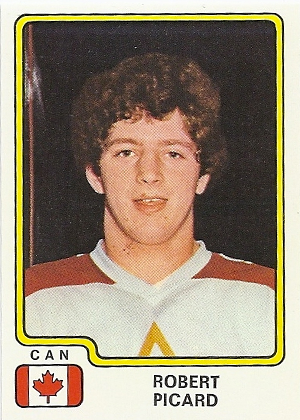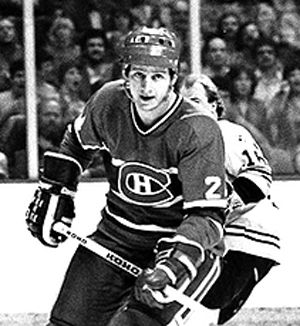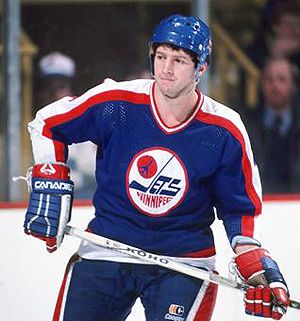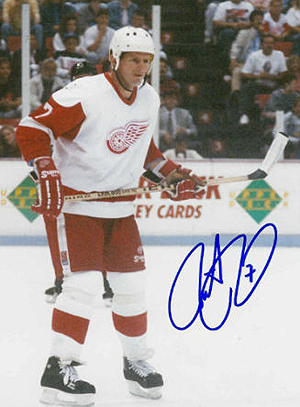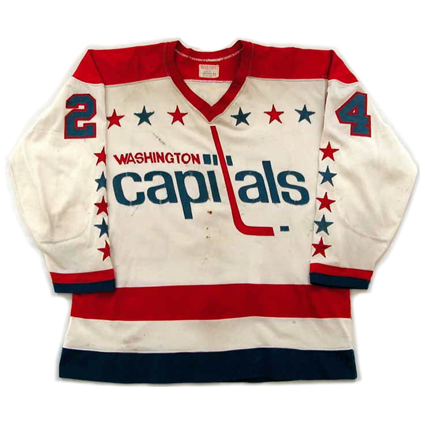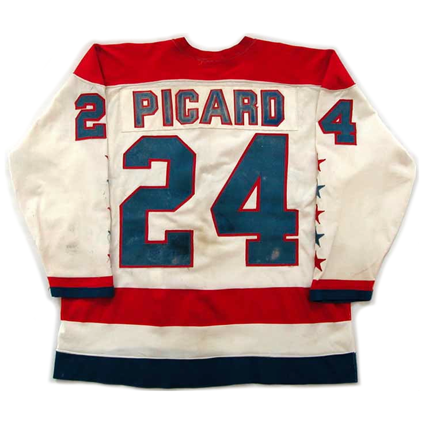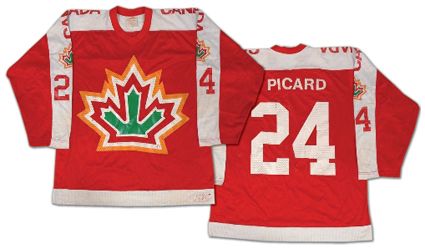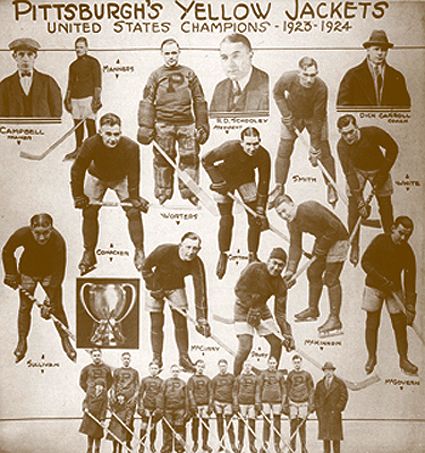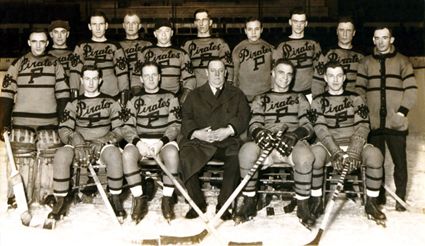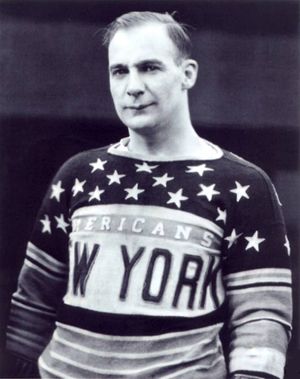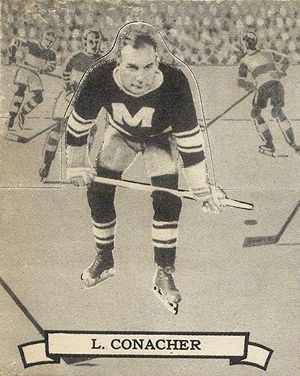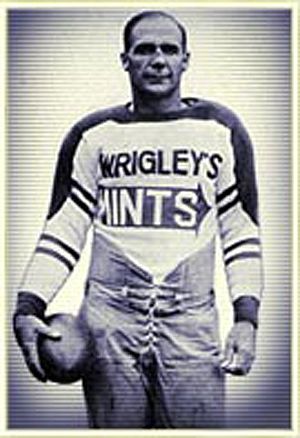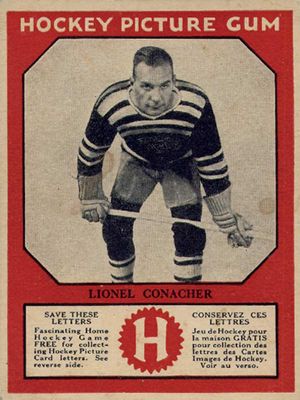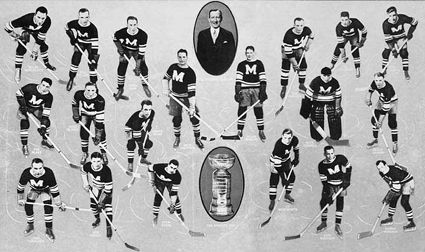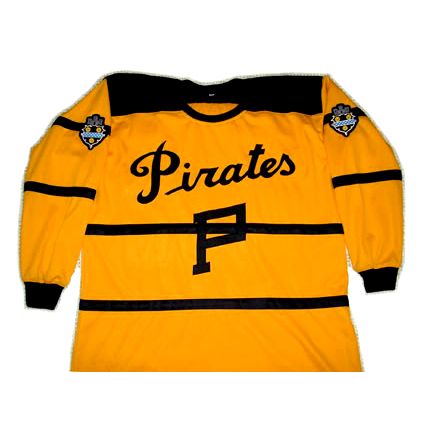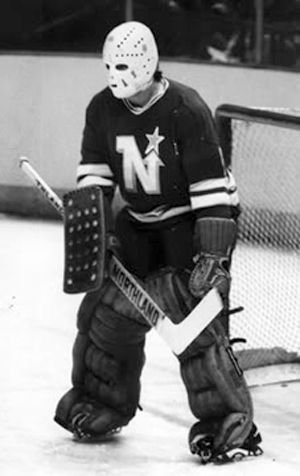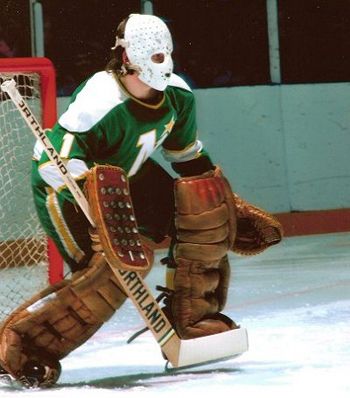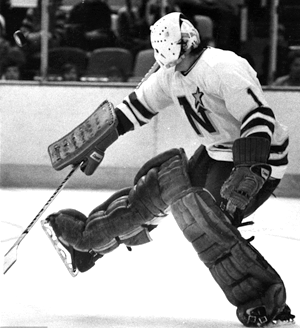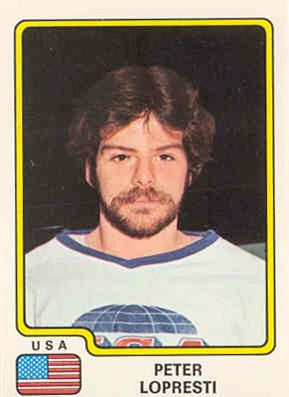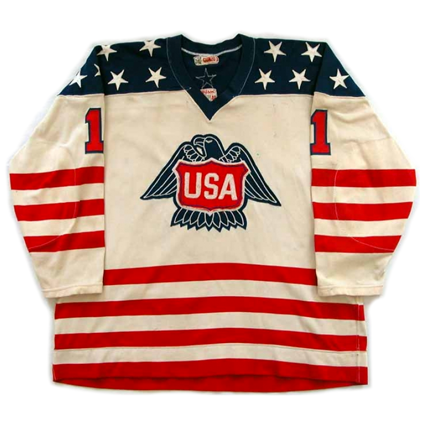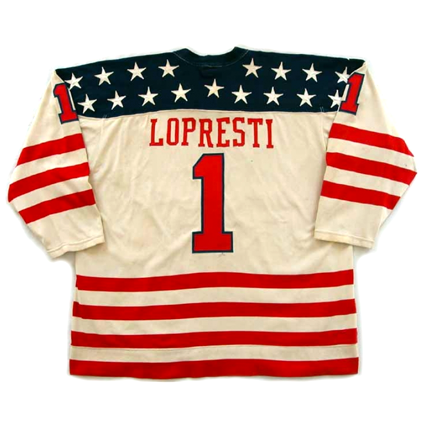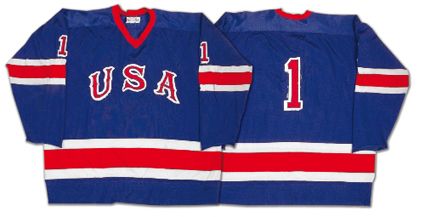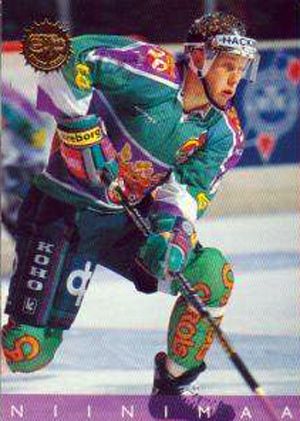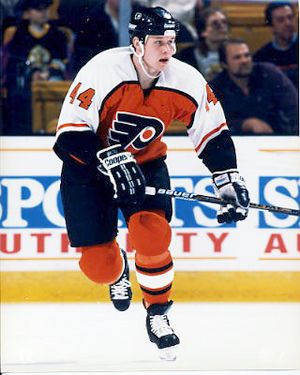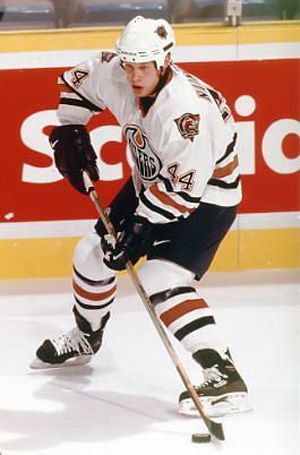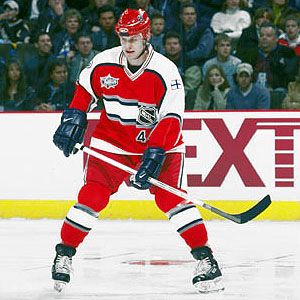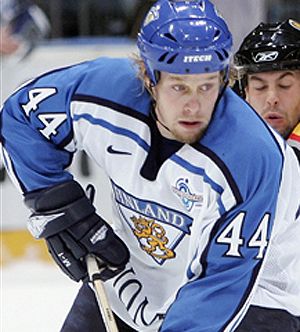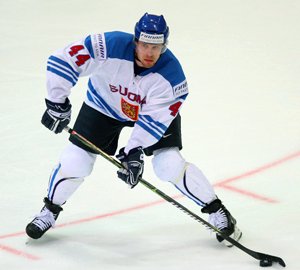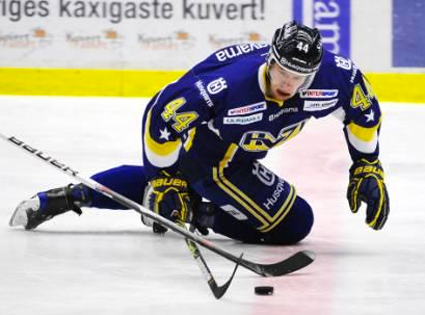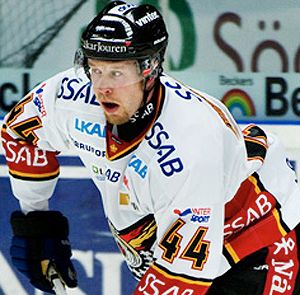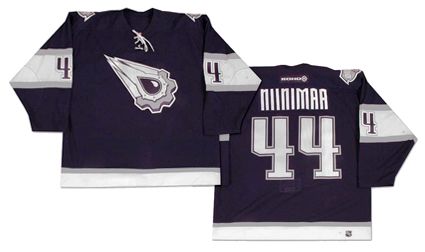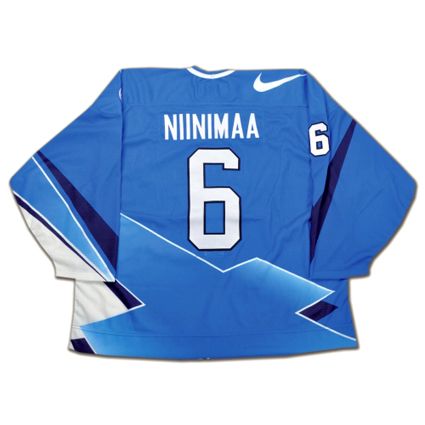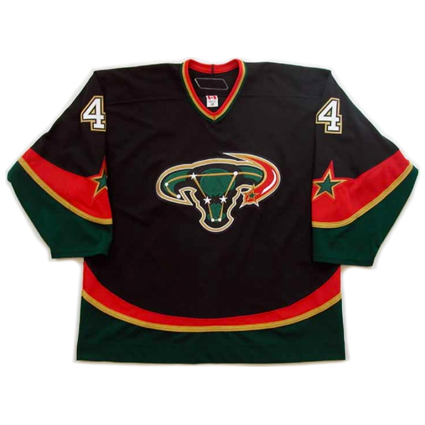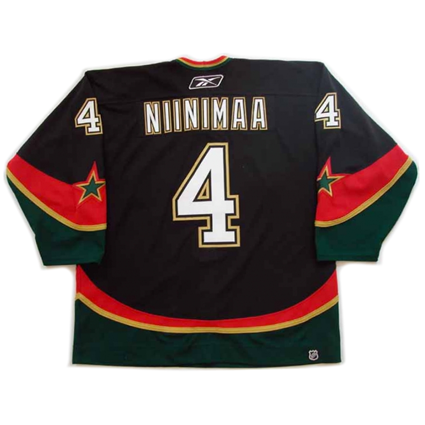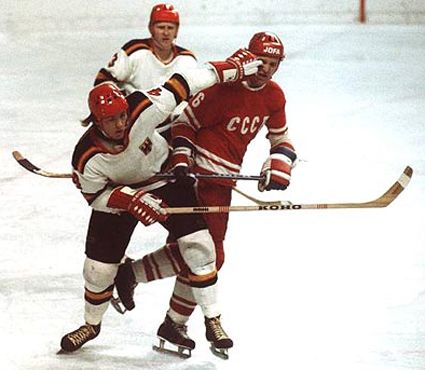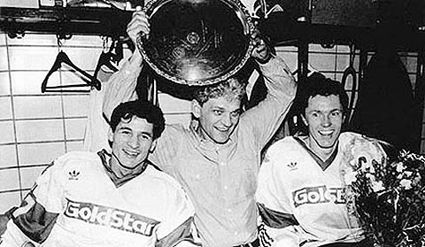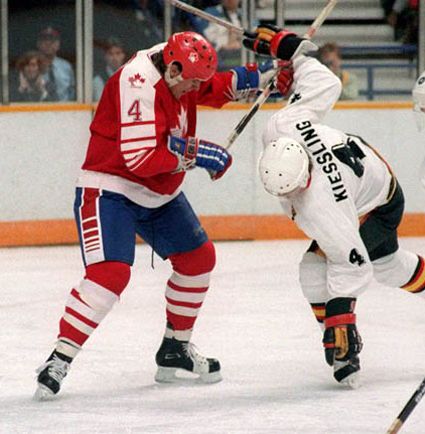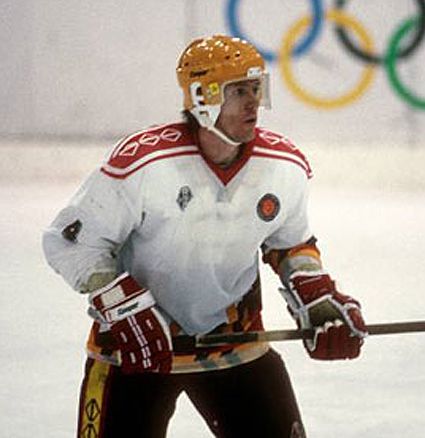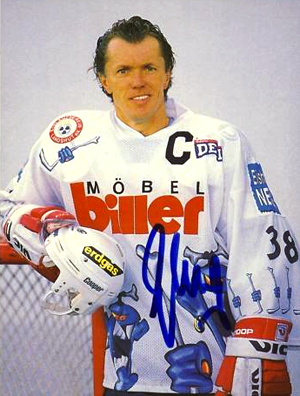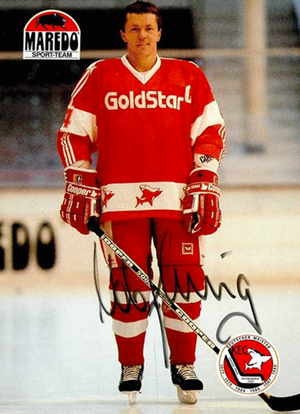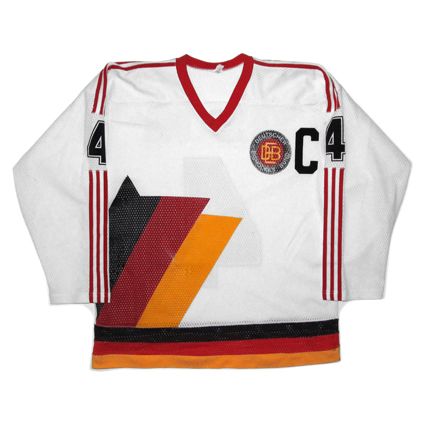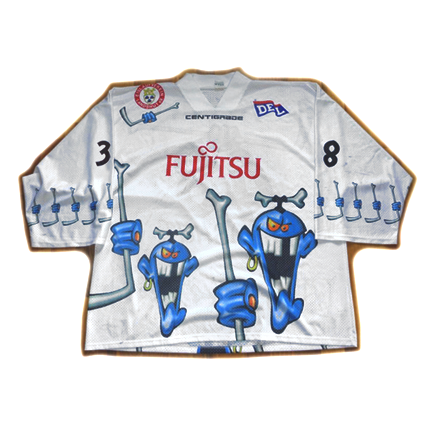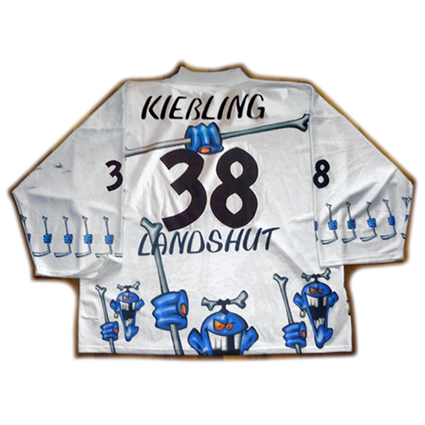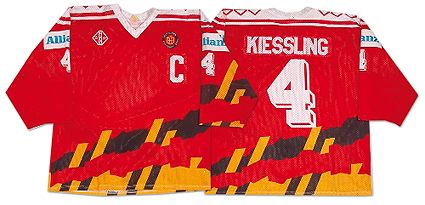Saturday, May 26, 2012
2012 Memorial Cup Update
For those of you unfamiliar, the Memorial Cup is the trophy awarded to the national junior champions of the Canadian Hockey League, which consists of the Quebec Major Junior Hockey League (QMJHL), the Ontario Hockey League (OHL) and the Western Hockey League (WHL).
The trophy dates back to 1919 and memorializes all the young Canadian hockey players who died in World War I. The competition for the cup has grown and evolved over time, beginning as a two team affair, decided in a two-game, total goals series between the champions from the east versus the champions of the west. It then changed to a best-of-three, then best-of-five and then a best-of-seven series.
In 1972 it grew to include three teams with an ever evolving format until 1983, when a fourth team was added to the mix., that being the team hosting the tournament.
In light of the 59 teams spread out over three leagues all vying for the championship, the Memorial Cup in considered one of the hardest trophies to win in sports.
This year's format called for the four teams to begin play on Friday, May 18th when the WHL champion Edmonton Oil Kings played against the host team, the Shawinigan Cataractes (which translates to "Waterfalls" in English). In a wild 5 goal third period, Edmonton outscored Shawinigan to win the game 4-3.
Today's featured jersey is Shawinigan's 2012 Memorial Cup special commemorative jerseys worn for the opening game of the tournament which honor the 62nd Field Artillery Regiment of the Canadian Army which is located in Shawinigan.
Those jerseys are now up for auction with the proceeds going to benefit veterans and their families.
Shawinigan's commemorative jersey
The competition continued on Saturday with the defending champion Saint John Sea Dogs losing to the London Knights 5-3 in the opening game for both clubs. Shawinigan rebounded on Sunday to take and easy 6-2 win over the Knights.
At this point Edmonton's tournament began to go haywire, losing to Saint John 5-2 on Monday and dropping Tuesday's game to London 4-1, who improved to 2-1.
Saint John also went to 2-1 with their victory Wednesday 4-1 over QMJHL rivals Shawinigan, a nasty affair full of questionable hits and high sticks, which degenerated into fights and finished the coaches shouting at each other, which all resulted in both teams being fined.
That game closed out the Round Robin portion of the schedule with London finishing on top to earn a direct berth in the championship final. Placing second was Saint John, also at 2-1. They would face the winner of the tiebreaker game on Thursday, a matchup between Shawinigan and Edmonton, which went to the Cataractes in a 6-1 romp to the delight of the home fans, setting up a much anticipated return bout with Saint John which took place on Friday night.
**********SPOILER ALERT FOR AMERICANS**********
THIS GAME HAS NOT YET AIRED IN THE UNITED STATES
IT WILL AIR TODAY AT 3 PM EST ON THE NHL NETWORK
The two QMJHL rivals took to the ice for the second time in ss days and the game was tied at 2-2 after one period before Shawinigan put 20 shots on goal to Saint John's 8 in the second period, coming away with a 4-3 edge.
Saint John tied the game midway through the third period only to have the Cataractes regain the lead four minutes later with a goal that just made it over the line on a shot from the point. Michael Chaput put the game out of reach with an empty net goal at 19:08, his second goal of the game, and Shawinigan added another goal with just 10 seconds left for the deceptive final margin in what was otherwise a close, hard fought game which sent the host team into the final, much to the delight of their thrilled supporters.
The championship final is Sunday with live coverage in Canada at 7 PM eastern on Sportsnet and in the United States on Sunday night at 7 PM eastern on the NHL Network with a repeat on Monday afternoon.
Labels:
2012 Memorial Cup
Friday, May 25, 2012
1977-78 Washington Capitals Robert Picard Jersey
Defenseman Robert Picard, born on this date in 1957, was a defenseman with the Montreal Juniors who tore up the QMJHL from 1973-74 until 1976-77. As a rookie in junior hockey, Picard introduced himself to the league with 53 points and a whopping 296 penalty minutes as a 16-year-old. Gaining experience and confidence, he returned for the 1974-75 season and made leaps in all categories, nearly doubling his goal total to 13 and raising his assist total to 74 for a total of 87 points in 70 games. His increased offensive numbers did nothing to harm his aggressiveness, as he spent 337 minutes sitting out his various transgressions, the equivalent of more than 5 1/2 games of penalty time.
After a similar season in 1975-76, Picard earned top prospect status for the upcoming NHL draft with a 32 goal, 92 point season in 1976-77 while maintaining his penchant for time in the penalty box with a career "low" of 267 minutes. His leadership was also on display as he was the Juniors team captain that season.
When the 1977 NHL draft arrived, Picard did not need to wait long to hear his name called, as he was selected third overall by the third year Washington Capitals, who hoped he would anchor their defense for years to come.
His first season in Washington of 1977-78 saw Picard finish fourth in team scoring behind a trio of forwards with 10 goals and 37 points while topping 100 penalty minutes with 101.
With the Capitals not qualifying for the playoffs, Picard had the honor of being selected to play for Canada in the 1978 World Championships in Prague, Czechoslovakia, where Canada won a bronze medal behind the dominant Soviet Union and host Czechs in only their second year back in international hockey following an eight year absence due to the rules governing the status of amateur players.
Washington improved by 15 points in the standings during his second season of 1978-79 and Picard's numbers reflected their improvement, as he more than doubled his goal total to 21 while scoring a career high 65 points, establishing team records in the process. Even more notable was his improvement from a -26 as a rookie to a +3 rating. During the season he was also a member of the NHL All-Star squad who faced off against the Soviet Union in the 1979 Challenge Cup, held in place of the traditional NHL All-Star Game.
Despite their improvement in the standings, the Capitals again missed the playoffs which freed Picard to participate in his second World Championships in Moscow, where Canada narrowly missed out on another bronze by a single point.
After posting an 11 goal, 54 point season for the Capitals in 1979-80, and appearing in his first proper NHL All-Star Game, Picard was traded to the Toronto Maple Leafs in exchange for goaltender Mike Palmateer. His stay in Toronto lasted less than a full season, as the Maple Leafs sent Picard home to Montreal after 59 games of the 1980-81 season.
With such stalwarts as Larry Robinson and Rod Langway on the Canadiens roster, Picard was not relied on for his offense the way he was in Washington, which obviously reduced his point totals while with the Canadiens, scoring 28 points followed by 38 in 1982-83.
Early in the 1983-84 season, Montreal sent Picard west to the Winnipeg Jets after just seven games. He would play two seasons for the Jets, with his second of 1984-85 seeing him score 12 goals, his only season of double digit goals since leaving Washington. He would score 34 points that season and be whistled for 107 penalty minutes while equalling a career best +31 rating, previously set in Montreal in 1983.
His 1985-86 season was split between Winnipeg (20 games) and the Quebec Nordiques (48 games) following yet another trade between Canadian based teams for Picard, his fourth Canadian club in six seasons.
The Nordiques had actually drafted Picard back in 1977 when they were still members of the WHA, even signing him to a contract, but he was not allowed to play for them at the time, since he had already signed with the Capitals of the NHL.
He played in 48 games his first season in Quebec, but his total games were limited by a lacerated hand and broken ribs, this following missing the start of the season with the Jets due to a training camp concussion. Despite all that, he still tallied 41 points that season, his highest total since his early days in Washington.
He played three additional seasons with the Nordiques before being dealt to the Detroit Red Wings, playing 20 games before retiring before the following season could begin.
His final career totals were 899 games, 104 goals and 319 assists for 423 points.
Today's featured jersey is a 1977-78 Washington Capitals Robert Picard jersey as worn during Picard's rookie season in the NHL with the Capitals. Picard wore #24 in honor of his uncle, former NHLer Noel Picard.
The Capitals wore their star-spangled jerseys from the time of their NHL debut in 1974 through the 1994-95 season when they stopped wearing their classic red, white and blue jerseys and changed to a new blue and black color scheme.
What really sets the authentic version of the Capitals jersey apart from the replica jerseys is that each letter of the Capitals logo on the front is a separate piece of material, rather than the entire crest being embroidered in a smaller size onto a patch, which would then be sewn onto the jersey. Each of the 16 stars on the chest and sleeves are also separate pieces of material which are sewn on. If you can get an old game worn or authentic Capitals jersey, do so, as it is one of the largest differences in quality between the authentic and the replica of any jersey.
Bonus jersey: Today's bonus jersey is a 1978 Canada National Team Robert Picard jersey as worn in the World Championships when Picard earned a bronze medal.
This loud style was worn during the early days of Canada's return to international competition following their eight years away from the international scene in a dispute concerning the rules governing the amateur status of the full time hockey players from communist countries such as the Soviet Union and Czechoslovakia.
Today's video segment begins with an episode of the competition Showdown '80, a shootout style challenge shown during intermissions of network hockey games during the 1979-80 season. This episode features an ever tiring Mike Palmateer facing off against half a dozen NHL stars, including Robert Picard.
This next video features Robert Picard relative and predecessor Noel Picard, who gets emotional when thinking about his playing days with the Blues.
Finally, this video features Robert Picard future relative and decedent Captain Jean-Luc Picard.
Labels:
Canada,
Picard Robert,
Washington Capitals
Thursday, May 24, 2012
1925-26 Pittsburgh Pirates Lionel Conacher Jersey
Pull up a chair and settle in, as today we have the story of a life less ordinary, for on this date in 1902, Lionel Conacher came into this world. Nicknamed "The Big Train", he quit school after the eighth grade to help support his nine younger siblings. While in school, he quickly discovered that he was among the better players in any of the many sports he tried. He eventually won 11 championships with the 14 different teams he played for as a teenager.
At the age of 16 he won an Ontario wrestling championship and at 20 won a Canadian amateur boxing championship. In one memorable day, he hit a triple to help his team win the Toronto city baseball championship before rushing across town to find his lacrosse team losing by a score of 3-0 in the Ontario provincial final. He donned his gear, joined the fray and proceeded to score four goals and an assist to lead his team to victory for his second championship in a matter of a few hours!
He was an accomplished football player, winning city and provincial championships as a teenager before moving up to the senior level, where he led the league in scoring in 1921 while leading his team to not only the league championship, but also the Grey Cup as Canadian champions.
The cost of hockey kept him from taking up the game until he was 16, but by 1920, he had added a Memorial Cup championship to his ever growing trophy case. NHL teams had begun to take notice of Conacher's prodigious abilities and the Toronto St. Patricks offered him $3,000 a season, while the Montreal Canadiens came in with an offer of $5,000, well above the current average of $1,000 a year. They were both rebuffed, as Conacher was not ready to give up his amateur status.
He accepted an offer to play for the Pittsburgh Yellow Jackets of the United States Amateur Hockey Association, an arrangement which included a job and paid university tuition, first at Bellefonte Academy and then Duquesne University. Ever the prolific athlete, Conacher played football for both schools in the fall before serving as captain for the Yellow Jackets over the winter, winning championships in 1924 and 1925. His summers were spent back home in Toronto, where he continued to purse baseball and lacrosse.
For the 1925-26 season, the Yellow Jackets turned professional, changed their name to the Pittsburgh Pirates and gained entry into the National Hockey League. Conacher surprised many in Toronto when he elected to remain with the club, which would mean an end to his football playing days, his acknowledged favorite sport.
The 1925-26 Pittsburgh Pirates
Conacher would score the first goal in Pirates history on his way to a total of 9 in 33 games. He returned to Toronto in the summer to play baseball professionally for a team named the Toronto Maple Leafs, who would win the International League championship followed by the Little World Series, the championship of minor league baseball in North America.
He returned to the Pirates for the 1926-27 season, only to be traded after ten games to the New York Americans. His second season with the Americans saw him set a career high of 11 goals. He would play two further seasons with the Americans, but having a bootlegger for a team owner led to his heavy drinking, which would take it's toll on Conacher's performance and health.
Finally in the offseason of 1930, he would quit drinking when his first child was born and his rights would be sold to the Montreal Maroons.
After his first season of play for the Maroons, the owners of the Canadian NHL franchises launched a plan to fill their arenas during the summer months by developing the indoor version of lacrosse. Playiing for the Maroons entry in the International Professional Lacrosse League, Conacher led the league in scoring, nearly doubling the point total of the next highest scorer, including scoring ten goals in a single game.
His first season with Montreal would start with Conacher, a defenseman, scoring 7 points, but he more than doubled that to 16 in 1931-32.
Following the season, he declined to return to the lacrosse league, choosing instead to wrestle professionally in the off season, eventually finishing his career undefeated at 27-0.
When the hockey season resumed, he showed no ill effects of his seemingly constant participation in sports by setting career high with 28 points for the Maroons in 1932-33.
That fall he was part of an effort to organize a new, professional football league. While the league did not get off the ground, he was able to filed a team of other former amateur players who had given up football by turning professional in other sports. The team played a series of exhibition games over the course of the next two falls, but the now 34 year old was beginning to feel his age and the team did not return for a third season.
The Maroons would then trade Conacher to the Chicago Black Hawks for the 1933-34 season, where he scored 23 points and double digit goals for one of only two times in his career with 10. He added two more goals in the playoffs as Chicago won the first Stanley Cup in franchise history and Conacher was named a First Team All-Star for the season.
Just prior to the following season, Conacher was traded to the Montreal Canadiens with two other players for package that included the legendary Howie Morenz, goaltender Lorne Chabot and on other player. That was not the end of the wheeling and dealing, however, as the Canadiens then sent Conacher back to the Maroons in another trade.
The Maroons would go on to defeat the defending champion Black Hawks and then outlast the New York Rangers to earn a place in the finals, where they swept the Toronto Maple Leafs three games to none, giving Conacher back to back Stanley Cups, only with two different clubs.
He would play to more seasons for the Maroons, during which his point total rose from 8 to 14 to 25, the second highest of his career, which came in his final season in the NHL.
Following his athletic career, Conacher went into politics, becoming a member of the Ontario provincial parliament from 1937 to 1943. From 1949 he won a seat in the Canadian House of Commons, serving until 1954 when he died of a heart attack after hitting a triple during the annual softball game between the Members of Parliament and the press.
Concacher's long and successful sporting career was recognized in many ways, as he was named Canada's Greatest Male Athlete of the Half-Century in 1950, having won the Little World Series, a Memorial Cup, a Grey Cup and two Stanley Cups!
Following his passing, he was inducted into the Canadian Sports Hall of Fame (1955), the Canadian Football Hall of Fame (1963), the Canadian Lacrosse Hall of Fame (1966) and the Hockey Hall of Fame (1994). Additionally, the annual award by the Canadian Press for Male Athlete of the Year is named the Lionel Conacher Award.
In addition to Lionel's exploits, his brothers Charlie Conacher and Roy Conacher also played in the NHL and were inducted into the Hockey Hall of Fame, while his son Brian Conacher played in the 1964 Olympics for Canada and won a Stanley Cup in 1967 while with the Toronto Maple Leafs.
Today's featured jersey is a 1925-26 Pittsburgh Pirates Lionel Conacher jersey from Conacher's first NHL season. The Pirates chose black and gold based on the colors of the City of Pittsburgh flag, and were the first team from the city to adopt those colors, as the Pirates baseball club was still wearing red, white and blue and would not change to black and gold until 1948 and the Pittsburgh entry of the National Football League would not arrive on the scene until 1933.
Labels:
Conacher Lionel,
Pittsburgh Pirates
Wednesday, May 23, 2012
1976 United States National Team Pete LoPresti Jersey
Born into a hockey family, Pete LoPresti was the son of former NHL goaltender Sam LoPresti. Pete attended the University of Denver in 1972-73, getting into four games before becoming their starter in 1973-74 when his workload increased to 38 games, winning 22.
He turned pro the following season with the New Haven Nighthawks of the AHL, playing in 11 games prior to making his NHL debut with the Minnesota North Stars, where he split time with incumbent Cesare Maniago. It was a baptism by fire, as the North Stars were at a low point in their history, finishing below 70 points for the second of six consecutive seasons, all while trying to fend off competition from the cross-town WHA Minnesota Fighting Saints. LoPresti ended his rookie season with a 9-20-3 record in 35 games, essentially the same as veteran Maniago.
His second season with the North Stars was equally as trying, as he finished 7-22-1. With Minnesota failing to qualify for the playoffs, LoPresti was tabbed to join the United States for the 1976 World Championships in Poland. There, the US finished 3-3-1 in the First Round, thanks to wins over Sweden, Poland and West Germany and a tie with Finland. That was good enough for fourth place out of eight and a spot in the Final Round, eventually finishing fourth.
Before the next NHL season could begin, a new competition made it's debut and LoPresti was again called upon by the United States, along side fellow Minnesotan Mike Curran, to take part in the 1976 Canada Cup, which hoped to capitalize on the success of the 1972 Summit Series.
For the 1976-77 season, Maniago was gone, and in his place arrived new goaltending partner Gary Smith. The North Stars improved from 47 to 64 points in the standings, which allowed LoPresti to set a career high with 13 wins in 44 games. The North Stars qualified for the playoffs for the only time during his tenure with the team, but were quickly ousted in two games.
He would attain clear #1 status for the 1977-78 season, playing in 53 games with now Paul Harrison backing him up, but the unsettled North Stars would go through a series of three head coaches while stumbling to a last place finish as LoPresti won 12 times.
With the North Stars again missing out on the playoffs, he was off to Czechoslovakia for the 1978 World Championships. LoPresti started nine of ten games for the Americans, including wins over East Germany and Finland.
Huge changes were in store for the North Stars in 1978-79, who had now added several top draft picks as well as the unprecedented merger with the Cleveland Barons, which saw the arrival of established number one goaltender Gilles Meloche and his Barons backup and 10-year veteran Gary Edwards, which not only limited LoPresti to just 7 starts, but also relegated him to the minors with the Oklahoma City Stars for the bulk of the season, where his winning record of 16-15 was his first since college.
He was drafted by the Edmonton Oilers in the 1979 Expansion Draft, but when he failed to make the Oilers roster following training camp, he retired but returned for the 1980-81 season, playing in 2 games for the Oilers as part of their revolving door in goal, which saw Andy Moog (7 games), former North Stars teammate Edwards (15), Ron Low (24) and Eddie Mio (43) all see time goal.
The majority of his season was spent playing 36 games for the Wichita Wind in the Central Hockey League before retiring for good after a career unfortunately saddled with bad luck, including once having an easy save bust through his goalie stick and into the net for the game winning goal, and bad timing, having been on some very dismal teams during his six years in the NHL and failing to stick with the Oilers, who were on the verge of a dynasty.
Today's featured jersey is a 1976 United States National Team Pete LoPresti jersey as created for the 1976 Canada Cup. This amazing jersey with it's fully chain stitched crest and sewn on names, numbers and shoulder stars was actually only used in the pre-tournament games by the Americans, as the players complaints about the weight of he heavy dureen fabric and how hot the sweaters were, especially in the late summer heat of late August, led to the USA wearing mesh jerseys with screened on graphics for the actual tournament games, a far cry from the outstanding workmanship which went into today's featured jersey.
This would be the only appearance of this style jersey, as the Americans reverted back to their standard jerseys for the 1977 World Championships.
Bonus jersey: Today's bonus jersey is a 1976 United States National Team Pete LoPresti jersey as worn during the 1976 World Championships in the spring prior to the 1976 Canada Cup. This style was a carry over in look of the United States jerseys which date back to the late 1960's, illustrating what a radical design today's featured 1976 Canada Cup jersey was, obviously inspired by the nation's Bicentennial celebrations, which had occupied the minds of all Americans that year.
Photo courtesy of Classic Auctions
Today's video selection is the United States taking on Canada in the 1976 Canada Cup with LoPresti in goal while wearing today's featured style jersey.
Labels:
LoPresti Pete,
Minnesota North Stars,
USA
Tuesday, May 22, 2012
2001-02 Edmonton Oilers Janne Niinimaa Jersey
Born on this date in 1975, Janne Niinimaa played junior hockey in the Kärpät Oulu system in Finland from 1990 to 1993, which included games with the their junior club as well as their senior club, which was playing in the second division of Finnish hockey at the time. He also participated internationally at the 1992 World Junior Tournament and European Junior Tournament, where he was particularly effective offensively, scoring 4 goals and 7 points in 6 games as a defenseman at just 16 years of age. He would also return to the European Juniors for a second time in 1993.
Following the 1992-93 season, he was drafted by the Philadelphia Flyers in the 1993 NHL Entry Draft, but remained in Finland for several more seasons, only now having moved to the famed Jokerit Helsinki organization. He again divided his time between the junior and senior clubs, playing 10 games with the juniors and 45 games with the senior team, only this time in the top level SM-liiga where Jokerit would go on to win the league championship.
Jokerit would finish with the best regular season record in 1994-95, but wind up as runner's up in the playoffs before once again taking the playoff championship in 1996, a season in which Niinimaa would score a new personal best of 20 points in 49 games.
During his three seasons with Jokerit, Niinimaa would also compete in his second and third World Junior Tournaments in 1994 and 1995. He would also make his World Championships debut later in 1995, taking part in a memorable first world title for the Finns, who defeated rivals Sweden in Sweden to claim the title and set off a wild celebration back at home.
In 1996, he would again skate in the World Championships and was also a member of the Finnish team at the inaugural World Cup of Hockey in the fall of 1996, just prior to making his NHL debut with the Flyers.
His first season in Philadelphia would see him contribute solid offensive numbers, registering 40 assists and 44 points in 77 games while posting a +12 rating. He would immediately get a healthy dose of playoff experience, as the Flyers would make it all the way to the Stanley Cup Finals in his rookie season in the NHL, as he continued to impress with 13 points in 19 games.
He played a second season with the Flyers, appearing in 66 games until being dealt at the trade deadline to the Edmonton Oilers late in the 1997-98 season. He would eclipse his 44 points from the year before with a combined 45 points between the two clubs. Also during the season, his international resume would grow with his first Olympic experience, skating for the Finns in Nagano, Japan, the first Olympics to feature a full slate of NHL players, where Finland returned home with the bronze medal.
Niinimaa would play five more seasons for the Oilers, which included two additional 40 point seasons, setting a career high with 46 in 2000-01, third on the club and aided by the only double-digit goal total of his career with 12. His season would be rewarded by being named to the NHL All-Star Game.
His time with the Oilers also included three additional international appearances, the 2000 World Championships followed by a second Olympics as well as his fourth World Championships, both in 2002.
Late in the 2002-03 season, Niinimaa was dealt by the Oilers to the New York Islanders for the final 13 games of the season. With the Islanders a quick exit from the playoffs, Niinimaa was available for duty at the World Championships once more.
Back on Long Island, Niinimaa played in all 82 games for the Islanders, who once again made an early playoff exit, allowing Niinimaa to appear in his third consecutive World Championships.
Prior to the start of the 2004-05 season, he once more competed in the World Cup of Hockey for Finland.
At the conclusion of the tournament, the NHL lockout began, which cost the NHL a full season of play. Like many other NHLers, Niinimaa looked to Europe to continue stay active. He divided his season with 10 games with the Malmo Redhawks in Sweden's Elitserien and 26 games back where he began with Kärpät Oulu, who would capture the SM-liiga championship, the third of Niinimaa's career.
With the NHL labor issues resolved, he returned to the Islanders for the start of the 2005-06 season, but halfway through the year he was traded to the Dallas Stars, with whom he played 22 games. Prior to the beginning of the 2006-07 season, Dallas sent Niinimaa across the border once again, this time to the Montreal Canadiens, where he would finish his NHL career with 41 games.
He opted to continue his career in Europe from 2007-08, first with HC Davos in Switzerland, where he showed his talent with 37 points in 48 games. 2008-09 it was on to the SCL Tigers in Langnau, also in Switzerland. Following the season he played in his first World Championships for Finland in four years.
He then returned to Sweden playing with HV 71 in 2009-10, winning another championship.
He then joined Luleå HF in 2010-11 prior to returning to Switzerland this past season, when he joined the Rapperswil-Jona Lakers for the 2011-12 season.
Niinimaa's career NHL totals were 741 games played with 54 goals and 265 assists for 319 points while posting a +43 rating. He has also played 162 top level games in Finland, 101 in Sweden and an additional 68 in Switzerland to date.
Today's featured jersey is a 2001-02 Edmonton Oilers Janne Niinimaa jersey. This Oilers third jersey was designed by team part owner Todd McFarlane, who created a new logo full of symbolism, such as the five rivets in the gear representing the five Stanley Cups won by the Oilers, while the ten cogs in the gear representing the team's captains.
Unusual aspects of the jersey included the lack of any copper or red from the then current team's color palette, making for a very colorless design, the futuristic (and not overly legible) "Star Trek" font for the names on the back and matching numbers. Also odd was the choice of a throwback style lace-up collar with an other wise futuristic design.
A polarizing design among fans, this style was used from 2001-02 through 2006-07 until being a victim of the arrival of the new Reebok Edge jerseys, which forced teams to choose only two jerseys going forward.
Bonus jersey: Today's bonus jersey is a 1996 Finland National Team Janne Niinimaa jersey. From a high point in international jersey design, a few of the "waving flag" styles were introduced in time for the 1996 World Championships and were then rolled out for all teams for the 1996 World Cup of Hockey. They continued to be worn during the 1997 World Championships before being phased out for the 1998 Olympic Games.
Photos courtesy of Classic Auctions
Additional repulsive jersey: Today's additional repulsive jersey is a 2005-06 Dallas Stars Janne Niinimaa jersey. While the Oilers jersey was loved by some and disked by others, the Dallas Stars "Mooterus" jersey was derided nearly universally by everyone, including Stars team owner Tom Hicks, who rejoiced on the occasion of the jerseys final game, claiming "Good riddance. The funny thing is that you can't find anyone around here who will take credit for designing it. Nobody's left."
Aside from the unexplainable appearance of red in the jerseys, which was in no way a Dallas Stars color at any time in their history, the overly busy main crest, which was supposed to convey a bull's head as mapped out by a constellation with the addition of a shooting star, instead resembled the female reproductive system, leading to it's derisive nickname.
The jersey was worn for the absolute minimum of 23 league mandated games over the course of it's two seasons of use (15 in 2003-04 and 8 in 2005-06) and discontinued when the Stars would not commit to the minimum of eight games for what would have been it's third season.
Um, someone's not a fan of Niinimaa, and went to a lot of trouble to collect his "career highlights" in this video.
Labels:
Dallas Stars,
Edmonton Oilers,
Finland,
Niinimaa Janne
Monday, May 21, 2012
1987 West German National Team Udo Kiessling Jersey
Born on this day in 1955, one of the finest players in German hockey history, Udo Kiessling was a rugged defenseman who began his career with SC Riessersee in the 1972-73 season. He also made his international debut with West Germany at the 1973 World Championships where he appeared in 10 games. Unfortunately, the Germans were outclassed by the competition and were relegated to Group B.
Kiessling moved to Augsburger EV for the 1973-74 season where he began to find his offensive game, doubling his goal total from the previous season to 16 in 36 games. He would again appear in the World Championships for West Germany.
The rise in the offensive side of his game continued in 1974-75 for SB Rosenheim with 20 goals and 38 points in 34 games. That year's World Championship Group B saw West Germany finish tied atop the standings with East Germany, both with a 6-1 record. However, for 1976 the top level would expand from 6 teams to 8, offering up two promotion spots, meaning no tiebreakers would be needed as both nations were elevated to Group A.
Kiessling's father Gerhard Kiessling was actually at one point the East German National Team coach, but thefamily to snuck into West Germany when Udo was young, and Gerhard later coached the West German National Team from 1966 to 1973, just as Udo's international career was beginning.
A second season with Rosenheim saw Keissling excel with 30 goals and 52 points in 34 games. During the season he also made his Olympic debut, where West Germany needed to advance out of the First Round, where they defeated Switzerland 5-1 to move into the Final Round of play. There, they defeated Poland 7-4 before losing to Finland 5-3, the Soviet Union 7-3 and Czechoslovakia 7-4.
On the final day of play, the Finns defeated Poland, setting up the final game between the United States and West Germany. If the Germans could defeat the United States, it would leave Finland, the United States and Germany each with a 2-3 record and 1-1 amongst themselves, making goal differential in their games as the deciding factor for the bronze medal. With West Germany ahead 3-1, they had accomplished their first goal of winning the game, but needed one final goal to drop the United States to even in goals and surpass the Finns, who were at +1. That goal did arrive thanks to Ernst Koepf , giving West Germany their first medal in any international competition since 1953 and equalling their Olympic bronze won back in 1932 - when the tournament consisted of just four teams.
Kiessling later competed the World Championships, were West Germany avoided relegation with a 6th place finish, ahead of both Finland and East Germany.
Kiessling in 1976 against the Soviet Union's Vitali Petrov
1976-77 saw him move to another new club, the Kölner Haie (Cologne Sharks). For the next three seasons he would play for Cologne, scoring 34 points in 1977 and 1978 before setting a new career high with 60 points in 40 games from 28 goals and 32 assists in 1978-79 and having been named the German Player of the Year in 1977. Additionally, his international resume continued to grow, as he made his customary appearance at the World Championships each year, with West Germany defending it's place in the top division each time.
The 1979-80 season broke the pattern, as Kiessling moved to Dusselforfer EG, where he impressed his new bosses with a career best 39 goals, 44 assists and 83 points, coming in only 48 games. Kiessling was also a member of the West German 1980 Olympic hockey team, scoring 2 goals and 4 points in 5 games.
He would remain with Dusseldorf for two additional seasons, 1980-81 and 1981-82. Once Dusseldorf was eliminated from the postseason, Kiessling came to North America on a tryout contract with the Minnesota North Stars, enticed by Lou Nanne, who was impressed with Kiessling's play back in the 1977 World Championships. He saw action in one game with Minnesota, who want to sign him to a contract, but Kiessling declined because he wanted to play for West Germany in the World Championships, ending his all-to-brief flirtation with the NHL after becoming the first German to ever play in the NHL.
His 1982-83 season began with EV Fussen in the second division, but after 21 games, Kiessling made a move to rejoin the Cologne Sharks, with whom he would remain for the next ten seasons, with his best coming in 1985-86 when he scored 18 goals and 45 points, a total he nearly equalled the following season with 44. He would also win his second Player of the Year award in 1984, a season which also saw him participate in his third Olympics.
Kiessling (right) with Hardy Nilsson (center) and Helmut Steger after winning the German championship in 1987
From 1983 to 1990, Kiessling would compete in the World Championships every year, with a best finish being a fifth place in 1983, which equalled his career best in 1978. He also competed in the 1984 Canada Cup, the only time West Germany would participate in the Canada Cup tournament. 1986 saw his third German Player of the Year award while 1988 saw him skate for West Germany once more in the Olympics, his fourth, where he set a personal Olympic best with 6 points.
Kiessling battling with Canada's Steve Tambellini in 1988
East and West Germany were reunited in December of 1989, and following Cologne's regular season in 1990-91, Kiessling made his 15th World Championship appearance, but his only one for the reunited Germany at the Worlds. During that tournament, he would play with Koepf's 23-year-old son, Ernst Jr. "I saw 'Koepf' on the back of the jersey and tried to make myself play like I was 21 again, but I couldn't," Kiessling joked.
Kiessling had one final international participation remaining in his career, that coming in his then record setting fifth Olympics in 1992, again, his only one for the reunified Germany.
Kiessling in Albertville, France in his record setting fifth Olympics
His German domestic career would conclude with four seasons with EV Landshut from 1992-93 to 1995-96, the final one coming as Kiessling was now 40 years old and only ending at that point due to a severe injury due to taking a puck to the face which broke 15 fractures and a month in the hospital.
Kiessling with his final club, the unusually named Landshut Cannibals
His final career totals are 1,065 games played with 334 goals and 520 assists for 854 points. He would also amass 1,561 penalty minutes and was a 15 time German league all-star and three-time German Player of the Year, winning four Defenseman of the Year awards and six national titles, with those coming in 1977, 1979, 1984, 1986, 1987 and 1988. His 320 international appearance is still the all-time record for Germany and was the best ever at the time of his retirement, still ranking second on the all-time list.
Following his career, he was named the Best German Defenseman of all time and inducted into the German Hockey Hall of Fame as well as the IIHF Hall of Fame in 2000.
Today's featured jersey is a 1987 West German National Team Udo Kiessling jersey. This style was worn by West Germany during the final year of Adidas supplying jerseys for the World Championships and was Kiessling's 12th World Championships, during which he set personal bests with 5 goals and 8 points as West Germany finished 5th, including wins over Finland, Canada and Switzerland.
Bonus jersey: Today's bonus jersey is a 1994-95 Landshut Cannibals Udo Kiessling jersey. This utterly bizarre jersey is quite unlike any we have featured previously on Third String Goalie, with it's repeating, wild cartoon character logo and minimalist design. One can only imagine what names they passed on before choosing "Cannibals" and the response was from Fujitsu upon seeing their logo on this jersey for the first time!
Of note, the character "ß" in Kiessling's name on this jersey in German is pronounced as "sz" and written as either SZ or SS despite it's similarity in appearance to an English capital B.
Perhaps this was a case of "there is no such thing as bad publicity" in action. Either way, once you've seen a Landshut Cannibals jersey, you won't soon forget it.
Extra bonus jersey: Today's extra bonus jersey is a 1992 West Germany Udo Kiessling jersey as worn in the 1992 World Championships, differentiated from the Olympic jerseys by the sponsorship patches on the arms.
This jersey is a prime example of the graphic design excesses of the early 1990's, with it's wild diagonal striping and torn paper edges. Note how busy the lower half of the jersey is and just how spartan the upper half is, with only it's discreet German Hockey Federation logo adding any sort of design element to the standard Tackla template of contrasting shoulders and chest logo shared by all teams. Show someone separate photos of the top and bottom half, and we doubt anyone would ever guess they were from the same jersey!
In today's video section, a look at some historical footage of Kölner Haie, which shows Kiessling scoring one of his many goals from the blueline.
Labels:
Germany,
IIHF,
Keissling Udo
Subscribe to:
Comments (Atom)

